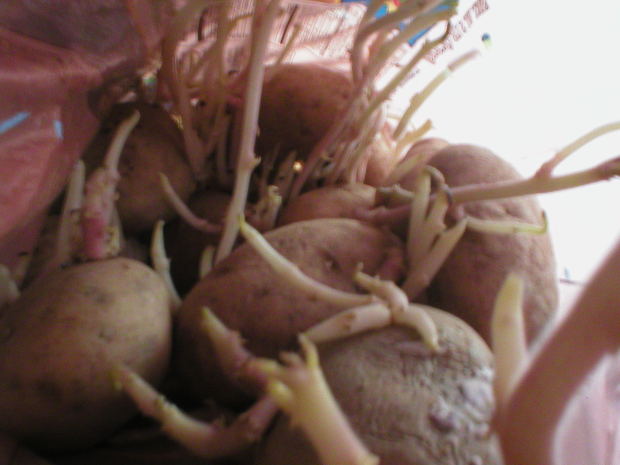
 Loading... Please wait...
Loading... Please wait...Save Money. Grow Your Own!
Fast Plain Box Shipping.
We ship to the US & Canada.
Posted on 28th Jun 2016
Want to grow potatoes in your own hydroponic garden?
Potatoes are one of
the easiest crops to grow with hydroponics. That's why so many guides show a
whole potatoe submerged in water and sprouting. They’re particularly easy in
the germination phase. Here are some of the steps that advanced growers have
taken to cultivate potatoes in a hydroponic environment.
A smart decision can be choosing the right indoor hydroponic system.
Find the Eyes

Potatoes can be started in so many ways. Again, you can use whole potatoes or you can cut potatoes into pieces. The critical thing is that each piece has an eye, a little indentation in the skin -- because that's what germinates into a new plant.
You’ll want to identify those “eyed pieces” and use them for germination. If you're keeping potatoes around the house and want to use them for this purpose, you'll have to avoid cutting them all up into french fries and eating them, or, in the words of one of the wackier growers we met at a recent conference, “getting high on your own supply.”
Just like in a Scottish referendum, you have to “find the ayes.” Groan. This dad joke aside, having a good supply of potatoes starters is crucial for this project.
Duck and Cover
The next major step is to submerge these pieces in some type of hydroponic grow media. Water has to be part of the equation in order to allow potatoes to germinate, but after that, sitting in water all the time could be bad for the plant. What's even worse is to allow too much air into the area where the potatoes are growing. If potatoes turn green, take caution -- green potatoes are poisonous and this is one of the trickiest things about growing hydroponic taters. You don't want to make yourself or anybody else sick, so make sure potatoes are well covered and check them at harvest for poisonous green growth.
In terms of growing media, some growers like to put clay pellets in the bottom, because they generally drain well. You might cover that with a mix of perlite and vermiculite or with some other things like rockwool. Growers might choose not to use rockwool if it's in large slabs, because you really need something with a finer texture that you can submerge the plant in and let the roots grow in.
Whatever you use, make sure you have the correct depth. Some birds have recommended getting trash bins or Rubbermaid containers and filling them up with media, with a kind of a liner on the outside to help seal out light. Of course, the top of the plant, the green part, is going to be getting the light -- after all, potatoes are a root vegetable. As the roots grow in the darkness, you get your product. But up above, the green stems and leaves are well exposed to either natural light or your artificial grow lights that hopefully have the right spectrum.
One way to advance this idea is to use interior reflective material above the lining of your bin. That will get more light to the tops of your plants to help them out with photosynthesis.
Delivering Nutrient-Rich Water

There are many ways to deliver the water to potatoes. You can use a drip system and start it at the top of the bin. You can use a flood and drain system that pumps water in and then out again. You can do all sorts of things, and this is really up to you. Hydroponic growers are free spirits -- they go by their own compasses. There'll be a lot of the things that you build into a system will be tested in the crucible of trial and error. If they work, you'll keep doing them. If they don't, you won't.
Harvest
When your hydro
potatoe plants have really grown up, and you can see that there are sizable root
structures, you can take out the plants and harvest your fingerlings or yellow yukons
or whatever. Make sure to keep potatoes in a cool, dark, dry place so that
they'll last longer. Create french fries, mashed potatoes, or other popular
sides for dinner, or sell your extra producer at a farmers market or other
venue.
There'll be a lot of the things that you build into a system will be tested in the crucible of trial and error. Get it right and you won't have to use harsh pesticides like Roundup or even pay much attention to the system at all!